Article
Tunnel lighting references:
The phEvoTUNNEL represents the best in tunnel lighting with its excellent compromise between weight, build quality, high efficiency and lighting results.
Located close to the English garden, the Biederstein tunnel in Munich, Germany is an important road artery through the city.
“We chose LEDiL as our preferred partner because their tunnel lighting optics are the highest quality, assuring accurate light distribution, safe driving conditions and ultimately the success of this project.”
Support
Links to find suitable optics for tunnel lighting:
Afraid of bad tunnel lighting? – So are we
Have you ever driven through a tunnel and wondered how the luminaires are designed or installed the way they are? It’s probably only those of us working in the lighting industry who give it any consideration; our own little occupational disease mixed with increased awareness, an investigational mindset, and acquired knowledge of how things could be.
Read on to find out what makes tunnel lighting so special and how LEDiL optics can help to enhance functionality, safety, and energy efficiency in them.
Good tunnel lighting maintains focus on the road – while bad can cause accidents
Building a tunnel means there is a need to ease mobility and allow greater volumes of traffic to pass through. They are very important passageways in our logistical network and built with great planning and care. Even in an era where air travel is pervasive, the same goods and people that travel by air are very likely to travel through tunnels at some point on their journey. Tunnels are everywhere.
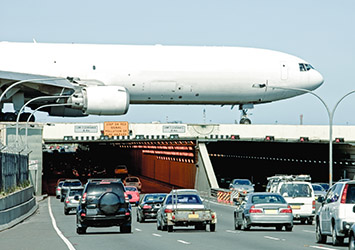
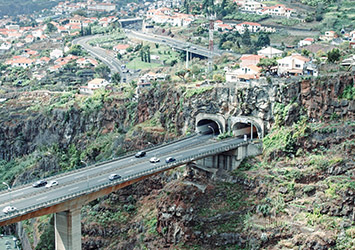 Heavy traffic in tunnels with narrow roads and moderate to high driving speeds sounds the alarm for potential accidents. Planning for emergency situations and rescues is very important, but minimising the possibility of accidents is even more so. Psychologically, driving inside a hollow, grey, and unnatural atmosphere may also cause feelings of anxiety. Good tires and an ever growing number of safety features on modern cars help improve safety, no doubt, but basically avoiding accidents comes down to being alert and aware of the surroundings early enough to stay in control; in which visibility plays a key role.
Heavy traffic in tunnels with narrow roads and moderate to high driving speeds sounds the alarm for potential accidents. Planning for emergency situations and rescues is very important, but minimising the possibility of accidents is even more so. Psychologically, driving inside a hollow, grey, and unnatural atmosphere may also cause feelings of anxiety. Good tires and an ever growing number of safety features on modern cars help improve safety, no doubt, but basically avoiding accidents comes down to being alert and aware of the surroundings early enough to stay in control; in which visibility plays a key role.
In and out – day and night, throughout the year
Our eyes are good at adapting to changing levels of brightness but need a moment to adjust. If you’ve ever woken up to a sudden switching on of the lights you often feel almost blinded for a second, even though the room is now full of light. Imagine the same thing happening while driving. For this reason, sudden variations in the amount of light when entering or exiting a tunnel must be avoided as much as possible. Contrary to other lighting applications where more lumens are usually needed towards the evening, in tunnel lighting, this is exactly the opposite.
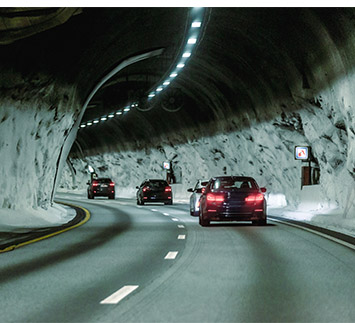 During the day lighting levels must be multiplied and concentrated at the beginning of the tunnel to match – or come as close as possible – the brightness outside. In the middle of the tunnel lighting levels can be lower, but again avoiding sudden variations is important. When nearing the end of a tunnel our eyes see natural light gradually approaching in the distance and therefore adapt back to daylight more easily. Towards evening, or if the conditions are otherwise darker, (for example in heavy rain) lighting should adapt so that it is dimmer.
During the day lighting levels must be multiplied and concentrated at the beginning of the tunnel to match – or come as close as possible – the brightness outside. In the middle of the tunnel lighting levels can be lower, but again avoiding sudden variations is important. When nearing the end of a tunnel our eyes see natural light gradually approaching in the distance and therefore adapt back to daylight more easily. Towards evening, or if the conditions are otherwise darker, (for example in heavy rain) lighting should adapt so that it is dimmer.
Designing luminaires for tunnels is a very challenging task, and choosing the right materials and components plays a crucial role in how reliable and safe the installations are. However, good design is necessary, as unreliable luminaire lighting can not only affect the success of a project, but also a manufacturer’s reputation, as well as creating extra expenses and compromising safety. Closing a tunnel for maintenance and the expenses involved in paying workers for nightshifts is also not cheap.
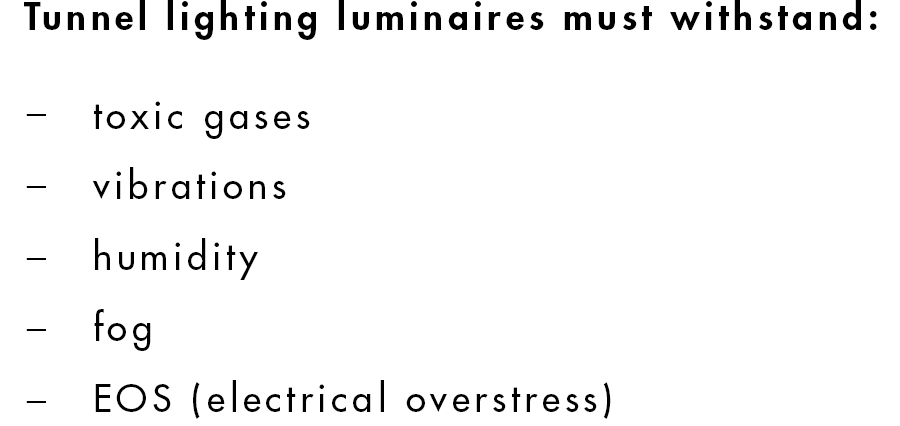
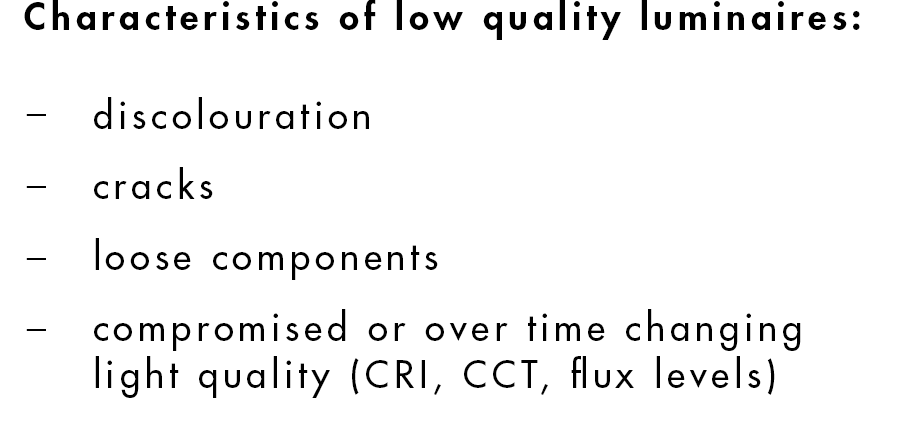
If the lighting is not uniform enough, or the spacing of the luminaires is too wide, the passing lights may generate flickering or flashing effects that can even cause a seizure in the driver. In addition, luminaire fixtures in tunnels tend to be installed lower than on street lighting poles outside, creating a potential risk of glare and dazzle to drivers.
Safety and efficiency – good optics can help with both
Controlling lighting levels with automated systems is a no-brainer in providing optimal, safe and energy efficient solutions, but that is not the end of story. There are, as always, many aspects that can be improved for more efficient and safer tunnel lighting. Highly efficient optics in terms of materials and design means less wasted light, i.e. less energy involved. Light uniformity with no yellowish areas or dark corners can bring comfort to an uncomfortable ambient, and in the case of an emergency good lighting can also reduce panic and help guide people out.
Let’s look at the three different tunnel lighting methods in more detail.
1. Symmetrical
 Symmetrical beams that spread light (energy) evenly and are good in tunnels with two-way traffic, uniformly illuminating both lanes without glare. Can be used to illuminate the sidewalls as well.
Symmetrical beams that spread light (energy) evenly and are good in tunnels with two-way traffic, uniformly illuminating both lanes without glare. Can be used to illuminate the sidewalls as well.
2. Pro-beam principle
 With the pro-beam principle light is directed away from the driver, resulting in almost zero glare. Compared to a symmetrical solution the lux levels (calculated amount of light falling on a surface) would remain the same, but the luminance levels (perceived brightness on a surface) would drop to around
With the pro-beam principle light is directed away from the driver, resulting in almost zero glare. Compared to a symmetrical solution the lux levels (calculated amount of light falling on a surface) would remain the same, but the luminance levels (perceived brightness on a surface) would drop to around 70 %. Can be used at tunnel entrance and exit zones.
3. Counter-beam principle
 With the counter-beam principle light is directed towards the driver and then reflected from the road at just the right angle to prevent glare. Compared to a symmetrical solution higher luminance levels (perceived brightness on surface) can be achieved with around 150 % more efficiency.
With the counter-beam principle light is directed towards the driver and then reflected from the road at just the right angle to prevent glare. Compared to a symmetrical solution higher luminance levels (perceived brightness on surface) can be achieved with around 150 % more efficiency.
In the end, we know most people will never have to think about how luminaires in tunnel lighting work. However, for those of us in the industry who do, we must promote and ensure that our solutions provide the best possible safety, visibility, and efficiency through well-designed luminaires.

If you would like to know more about the ideal optical solutions for any type of tunnel lighting, please contact our sales or tech support.
Links to find suitable optics for tunnel lighting:
Tunnel lighting
Counter and pro beams
Tunnel lighting standards for further reference.
• IEC 60598-1:2020
• IEC 60598-2-1
• IEC 60598-2-3
• IEC 60598-2-5
• IEC 60598-2-22
• IEC 62471
• IEC 60529
Tunnel lighting references:
The phEvoTUNNEL represents the best in tunnel lighting with its excellent compromise between weight, build quality, high efficiency and lighting results.
Located close to the English garden, the Biederstein tunnel in Munich, Germany is an important road artery through the city.
“We chose LEDiL as our preferred partner because their tunnel lighting optics are the highest quality, assuring accurate light distribution, safe driving conditions and ultimately the success of this project.”
Support
Links to find suitable optics for tunnel lighting:




